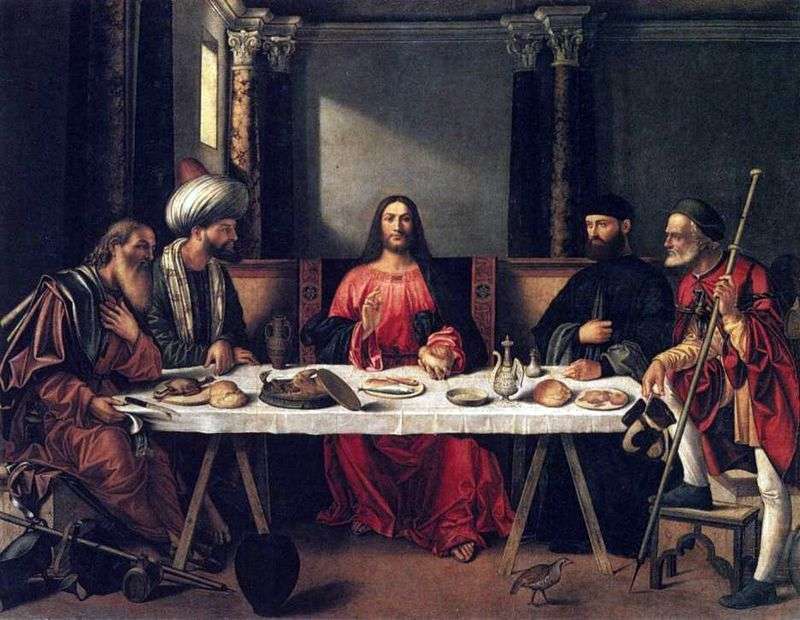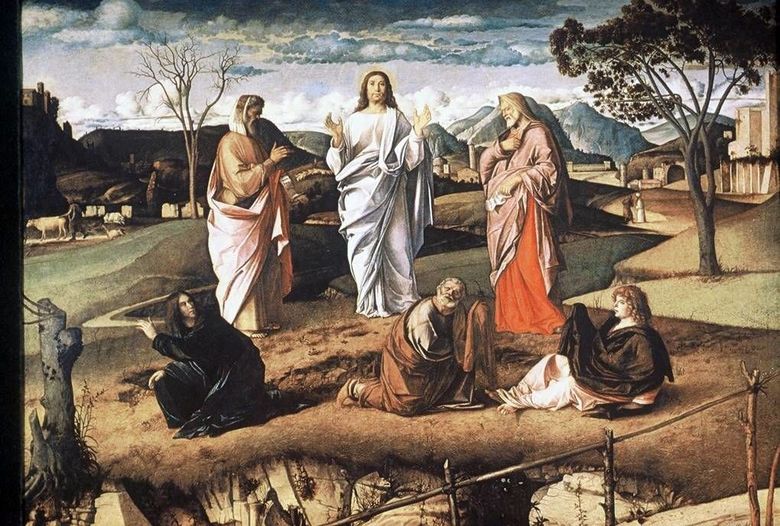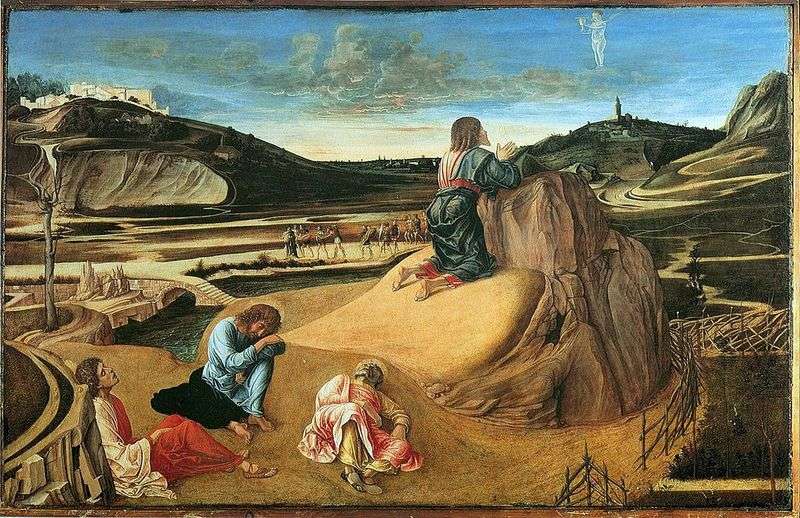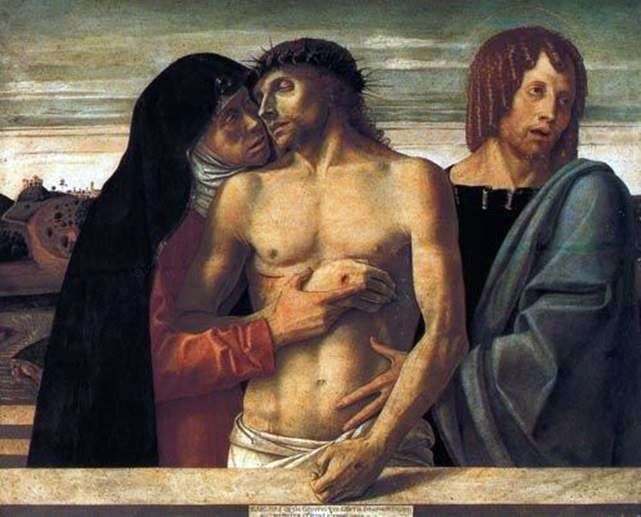
The Transfiguration of the Lord, which happened when Jesus Christ passed half of his earthly path, is most fully described in the Gospel of Matthew. The evangelist testifies: “Jesus took Peter, James and John, his brother, and led them to a high mountain alone, and was transfigured before them: and his face shone like the sun, and his garments became white as light.” And, behold, Moses appeared to him and Elijah, conversing with Him. “
After a short time there was a thunderous voice from heaven telling the apostles: “This is my beloved Son, in whom I am well pleased, hear him.” Matthew then says: “And when the disciples heard it, they fell on their faces and were very frightened: but Jesus came and touched them, and said,” Stand up and do not be afraid. “And having lifted up their eyes, they saw no one but Jesus alone.”
Bellini, in his characteristic manner, somewhat smoothes the drama of the event. For example, he makes a high biblical mountain a small hill, and Peter, James and John depicts not fallen prostrate, but just sitting on the ground. The greatness of what is happening must be understood by the viewer when he sees the radiance emanating from the figure of Christ in snow-white clothes. This radiance symbolizes the divine nature of the Savior. In the Catholic world, the feast of the Transfiguration of the Lord was always celebrated on August 6, but the landscape of Belleville looks more like an autumn one. It is possible that the paint, which used to be green, had become pale in course of time, and the picture acquired a yellowish brown tinge.
 Dinner at Emmaus by Giovanni Bellini
Dinner at Emmaus by Giovanni Bellini Transfiguration – Giovanni Bellini
Transfiguration – Giovanni Bellini Transformation by Sandro Botticelli
Transformation by Sandro Botticelli Prayer for the Chalice or Agony in the Garden by Giovanni Bellini
Prayer for the Chalice or Agony in the Garden by Giovanni Bellini Transformation
Transformation Kiss of Judas by Paula Moderzon-Becker
Kiss of Judas by Paula Moderzon-Becker Images of Christ by Giovanni Bellini
Images of Christ by Giovanni Bellini Transfiguration by Raphael Santi
Transfiguration by Raphael Santi